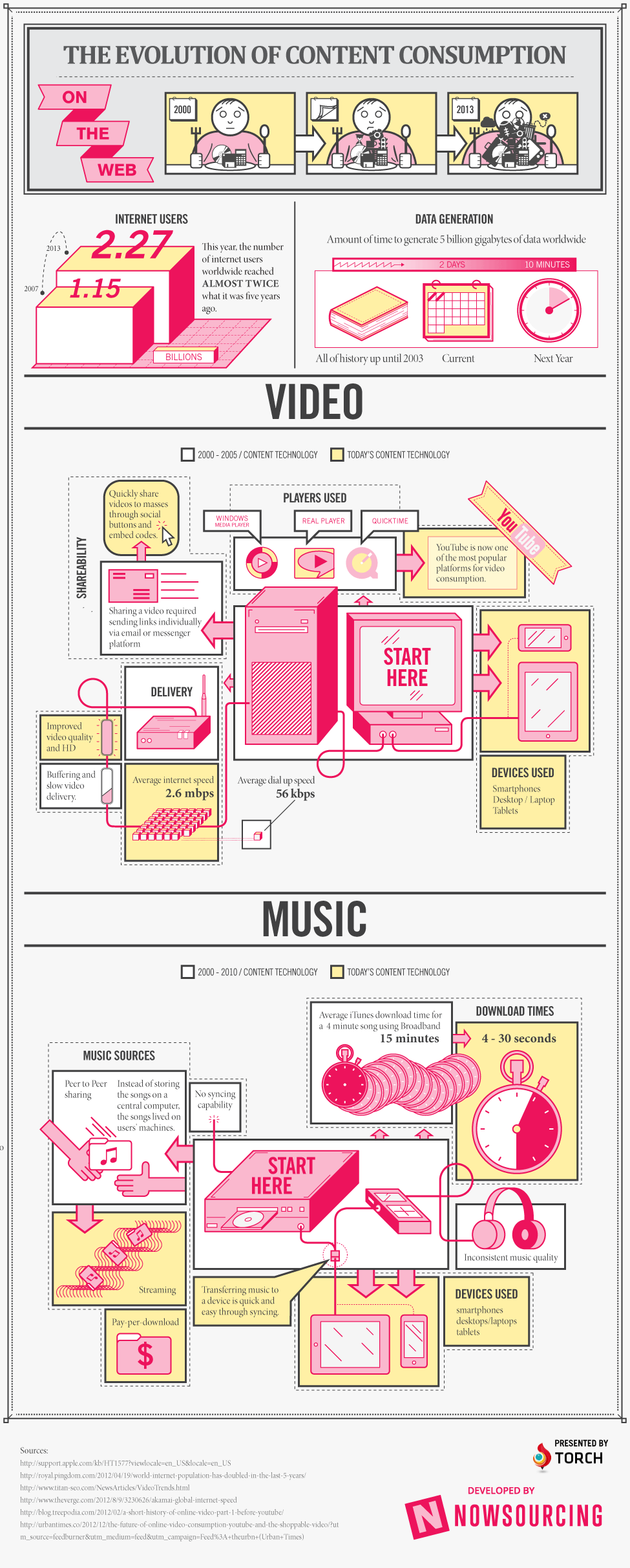Tag: media
-

Keeping Up with the Times: Trends That are Changing the Way Brands Market to Consumers
This infographic discusses how marketing has changed since the introduction of smartphones and social media platforms. IBM publicly released the first smartphone (IBM Simon Personal Communicator) in 1994; as of today, 20-30% of web traffic comes from mobile phones. Further, YouTube, Twitter and Facebook have all seen a prominent rise in usage, and as such,…
-

The Repercussions of Growing Up on Screens
Instead of drawing hopscotch games on sidewalks, riding their bikes through the neighborhood, and soaking up the childhood sunshine, most kids these days stay indoors, glued to their screens. According to the Kaiser Family Foundation research report Generation M2: Media in the Lives of 8- to 18-Year-Olds, total screen exposure for 8-18 year olds has…
-

The Evolution of Content Consumption
An infographic presented by Torch about the the amazing evolution of content consumption online.

